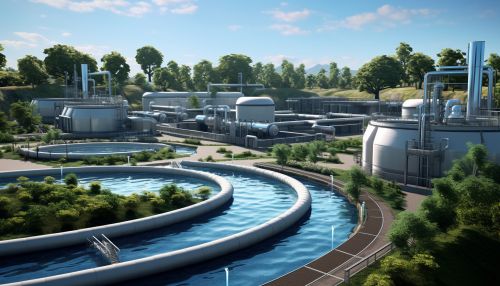Water recycling
Introduction
Water recycling, also known as water reclamation, is the process of treating wastewater and reusing it. It involves a series of treatments to ensure that the water is safe for its intended use. The process is an essential component of sustainable water management strategies worldwide.
Overview
Water recycling is not a new concept, as it has been practiced in various forms for centuries. However, advancements in technology and increasing awareness of the importance of water conservation have led to the development of more sophisticated and efficient water recycling systems.


Importance of Water Recycling
Water recycling plays a critical role in addressing water scarcity, a global issue that affects billions of people. By reusing water, we can significantly reduce the demand for fresh water, thereby conserving our precious water resources. Moreover, it can also help in reducing the discharge of wastewater into the environment, thus protecting our water bodies from pollution.
Water Recycling Process
The water recycling process involves several stages, each designed to remove different types of contaminants. The process typically includes preliminary treatment, primary treatment, secondary treatment, and tertiary treatment.
Preliminary Treatment
The preliminary treatment is the first stage of the water recycling process. It involves the removal of large solids and grit that could damage the equipment or interfere with subsequent treatment processes. This is usually achieved through screening and sedimentation.
Primary Treatment
The primary treatment involves the separation of organic and inorganic solids from the wastewater. This is typically done through sedimentation, where the wastewater is held in a tank to allow the solids to settle at the bottom.
Secondary Treatment
The secondary treatment is where the majority of the organic matter in the wastewater is removed. This is usually achieved through biological processes, where microorganisms are used to break down the organic matter.
Tertiary Treatment
The tertiary treatment, also known as advanced treatment, involves further treatment of the wastewater to remove any remaining contaminants. This can include processes such as filtration, disinfection, and advanced oxidation.
Applications of Recycled Water
Recycled water can be used for a variety of purposes, depending on the level of treatment it has undergone. Some of the common uses of recycled water include irrigation, industrial processes, toilet flushing, and even potable uses.
Irrigation
Recycled water is commonly used for irrigation purposes. It can be used for both agricultural irrigation and landscape irrigation, such as parks and golf courses. Using recycled water for irrigation can help in conserving fresh water resources and reducing the demand for potable water.
Industrial Processes
Recycled water can also be used in various industrial processes. For example, it can be used for cooling and heating in power plants, and for process water in manufacturing facilities.
Toilet Flushing
Recycled water can be used for toilet flushing in both residential and commercial buildings. This can significantly reduce the demand for potable water for non-potable uses.
Potable Uses
With advanced treatment processes, recycled water can even be used as a source of drinking water. This is known as potable reuse, and it is being practiced in several places around the world.
Challenges and Future Directions
Despite the numerous benefits of water recycling, there are still several challenges that need to be addressed. These include public perception, regulatory issues, and technological challenges. However, with continued research and development, it is expected that these challenges can be overcome, and water recycling can play an even more significant role in sustainable water management in the future.
